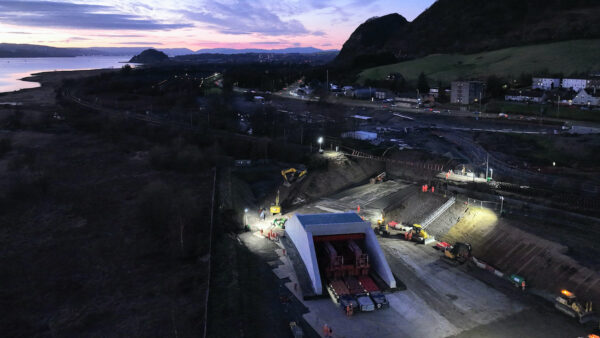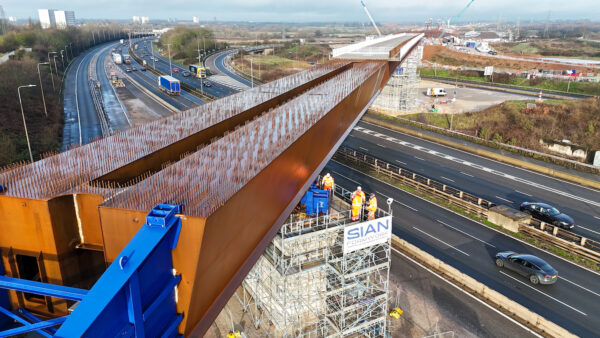Public infrastructure projects like schools and universities are well suited to MMC and helping clients to overcome unfounded quality concerns can lead to significant time, efficiency and cost benefits, says James Garner.
Enthusiasm for modern methods of construction (MMC) has been rejuvenated of late and the multivarious techniques it encompasses are increasingly being applied in new and innovative ways.
Sectors which previously shied away from all things ‘modern’ are now beginning to understand the benefits that MMC can bring and have been putting a toe in the water. It won’t be too long before more take the plunge.
One such sector is education. Public infrastructure projects like schools and universities are typically well suited to embrace MMC as they tend to favour standardised layouts which aligns with the principles for volumetric modular/panellised systems and allows for the shortening of pre-contract periods.
The government has certainly seen fit to embrace this approach. In January 2020, the Department for Education (DfE) announced the launch of the offsite schools’ framework (MMC1), expected to deliver 30 schools per year with a projected pipeline of £3bn by 2024. This is the next step in the evolution of offsite construction of school buildings and follows the previous DfE modular A, B and C frameworks.
The MMC1 framework uses the next generation in standardised school design which builds on earlier component design approaches to offsite construction and incorporates changes to the standard output specification. The end goal is to bring improvements across three key areas: time, quality and cost.
“Although the initial reason for pursuing MMC on this project was speed – we had just a few short months to get operational – what it has shown me is that modular is not just a temporary solution but a long-term one.”
“The framework responds to increasing demand for new school places across the UK,” says Heather Makin, director of higher and further education at global construction consultancy Gleeds. “Councils nationwide are seeking to deliver affordable, energy efficient spaces as quickly as possible, all while minimising the impact on staff and students – MMC is the obvious solution.”
Although the speed of construction appeals to clients in the education sector, anxieties around their look and feel abound. That was a primary concern for the University of Oxford’s Biochemistry and Biological Sciences Teaching Centre when, following the discovery of asbestos in one of its buildings, the estates team was forced to look to offsite manufacture to re-home 1,200 displaced staff and students.
Traditional build methods would not have been able to deliver what was needed to get them back up and running anywhere near quickly enough, but the team was concerned that the quality would fall short of its expectations.
“Despite initial reservations, in actual fact the building is the best quality that the client has seen in their time at the University,” says Paul Prince, programme manager for capital projects at the University of Oxford. “Although the initial reason for pursuing MMC on this project was speed – we had just a few short months to get operational – what it has shown me is that modular is not just a temporary solution but a long-term one. The quality is fantastic and, while it may be clear from the outside that this is a modular space in line with planning stipulations, internally you’d be none the wiser.”
Time, efficiency and cost benefits
Using prefabrication for educational facilities can shorten time spent onsite and increase the overall speed of delivery considerably – schools can achieve turnaround speeds that are up to 50% faster than traditional methods, for example. This is an invaluable advantage when taking into consideration the need for minimising disruption to teaching and learning. Reducing the amount of time construction takes while a site is in use also brings additional health and safety benefits and, crucially, goes some way toward meeting sustainability targets.
“Whether it be a secondary school, college, or university lecture hall, buildings delivered through MMC can be exciting, efficient, and stand the test of time.”
As well as allowing for tighter tolerances to be achieved thanks to the controlled conditions in which modules are fabricated – improving energy performance by reducing the amount of energy new buildings need for heating and lighting – MMC generally requires fewer deliveries to site and reduces waste across the construction process. Innovative products can be used to create ‘smart buildings’ which enable ongoing monitoring to understand how it is used, with subsequent data then applied to improve performance, for benchmarking and to inform the design of similar, future projects.
“With clients in the education sector becoming more familiar with MMC, there will, we hope, be a gradual shift in perception and an acknowledgement of its far-reaching benefits” concludes Makin. “Whether it be a secondary school, college, or university lecture hall, buildings delivered through MMC can be exciting, efficient, and stand the test of time. Developments in design and manufacture mean that each project can be customised, tailored to be as flexible as possible to maximise the benefits of a modular solution without compromising on efficiency and sustainability.”
As the application of MMC across education continues to gain momentum, designers, contractors, and consultants will continue to innovate. The result of which will be modern buildings which are more energy efficient, cost efficient, and time efficient than any that have come before – but not only that, they promise to be inspiring buildings which have a personality and identity all their own.
James Garner is global head of data and insights & analytics at Gleeds.











